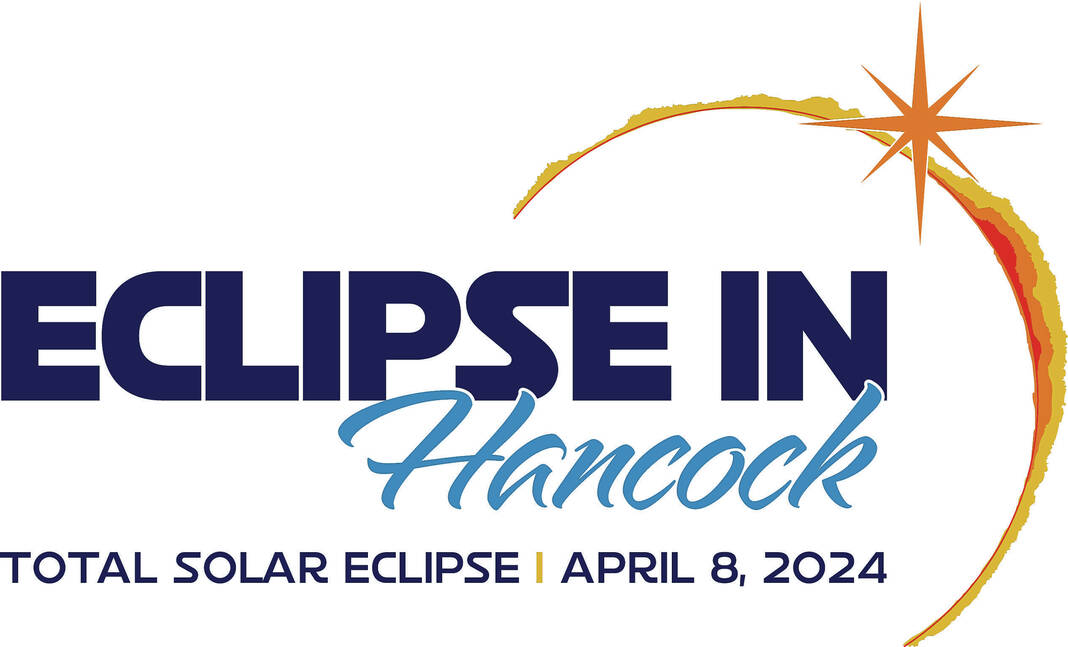
For the first time since its founding in 1828, Hancock County will have a total solar eclipse pass over it on April 8. Beyond noticing the sun’s changing shape during the eclipse, there are other observations to make during this rare event.
A partial eclipse begins in Hancock County at 1:51 p.m. Never look directly at the sun during a partial eclipse without proper eye protection. Proper protection includes ISO 12312-2 certified eclipse glasses. I recommend those made by American Paper Optics.
Record the temperature at 1:50 p.m. A thermometer placed in a location without a shadow is ideal, but a weather app on a device would work too. Record the temperature in 10-minute intervals through totality’s end at 3:10 p.m. or beyond. During some eclipses, temperatures have dropped as much as 20 degrees. In the time leading up to totality at 3:06 p.m., also make note of the wind speed and cloud cover changes.
Observe the shadows as the partial eclipse nears and leaves totality. If trees have leafed out, stand near or under one and look at the ground. Take special note of the shadows. Between 2:30-3 p.m. and 3:15-3:45 p.m., they’ll be mesmerizing. If the trees don’t yet have leaves, loosely interlock your fingers and, with your back to the sun, hold them out and look at the shadows created by the gaps between them. Hold a spaghetti colander and look at the shadows created by it.
When the eclipse becomes total at 3:06 p.m., you can look directly at the darkened sun without eye protection until 3:10 p.m. when totality ends. Look for wispy prominences called the corona emerging from the sun’s disk. They can only be seen during the totality portion of a solar eclipse.
During totality, planets and stars can sometimes be seen in the darkened sky. Look for Venus and Jupiter, the brightest objects. If you have a clear view of the horizon, look for the multicolored hues. These are from the skies outside the path of totality that still receive direct sunlight.
Listen carefully to birds and insects. During total eclipses, they may become noisy. If you’re with others, observe them. As the sky becomes noticeably dimmer, do people get excited or mellow? When totality arrives, do they scream, cheer or become quiet? Does anyone cry? These emotions and more come out during a total solar eclipse.
I’ve been asked about the best place locally to watch it. Any place where clouds don’t obscure the sun is great. If you have an opportunity to observe it from a tall hill with a clear view of the ground below, you could be in for a treat. From above you may be able to see the shadow of totality moving quickly along the ground from the southwest until it reaches your position. Unfortunately, there aren’t many high hills in Hancock County. Nearby public land is the hill atop Flat Fork Creek Park just west of Fortville over the Hamilton County line.
I’ve saved the worst news for last. Historically speaking, it’s cloudy in Hancock County about two-thirds of the time on April 8. If clouds persist that Monday, and you can’t leave town to try and see it elsewhere, I still encourage you to go outside and observe. It will still get dark from 3:06 to 3:10 p.m. The temperature may still drop. The birds and insects may behave abnormally. Clouds would dampen the day, but all would not be lost.
Hancock County won’t see another total eclipse until 2505, and the city of Greenfield doesn’t enjoy its next until 3290. Make a viewing plan and get ready for the show of a lifetime.
Charlie Hart lives with his wife and two children in central Indiana and works for a digital marketing firm in Fishers. Having grown up in northern Shelby County, he spent many of his teenaged summer nights playing basketball and tennis under the stars at Riley Park in Greenfield. He taught fifth grade at Greenfield Intermediate School from 2014-2021 and helped coordinate his school’s partial eclipse party in 2017.





